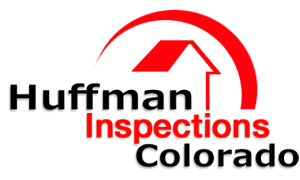Frequently Asked Questions
Why should I have a professional home inspection?
The purchase of a home is one of the largest purchases most of us will ever make in life. You should learn as much as you can about the condition of the property and the need for any major repairs before you buy, so you can minimize unpleasant surprises and difficulties afterwards. After the home inspection, you will have a much clearer understanding of the property.
If you are already a homeowner, a home inspection may be used to identify problems in the making and allow preventative measures to be taken which might avoid costly repairs in the future. If you are planning to sell your home on the market, you may wish to have an inspection performed prior to placing your home on the market. This will give you a better understanding of the conditions which may be discovered by the buyer’s inspector and an opportunity to make repairs that will put the house in a better selling position. Having a thorough home inspection will help you comply with current disclosure laws concerning the sale of your property, make for an easier sale of your home, and provide a better home for the purchaser.
How long does an inspection take?
The process usually takes two-to-three hours depending on size, age and condition of the home.
Do I need to be present during the inspection?
It is not necessary for you to be present for the home inspection, but it is highly recommended. You will be able to accompany the home inspector and ask questions directly as you learn about the condition of the home, how its systems work and how to maintain it. You will also find the written home inspection report easier to understand if you’ve seen the property first-hand through the home inspector’s eyes.
What does a home inspection include?
The standard home inspector’s report will review the condition of: the heating system, the electrical system, the cooling system, the interior plumbing, the roof surface, attic, insulation, walls, ceilings, floors, windows, doors, appliances, foundation, exterior, drainage and structure.
When will I receive my inspection report?
The goal of Huffman Inspections is to deliver a report within 24 hours after inspection. This will allow you and your agent enough time if any negotiations are required between you and any other parties. The report is a digital PDF report with photos that is delivered via email.
How long have you been in business?
Huffman Inspections has been in operation since 1989.
Are you licensed or certified?
There is no licensing for home inspectors in the State of Colorado. All of our inspectors are InterNachi certified and most have their CMI (Certified Master Inspector-over 1000 inspections) designation.
What does the testing and inspection include?
A basic inspection is limited to a visual walk-around of your home or building to determine if the EIFS has been installed per industry standards.
The next level which is the recommended inspection; is semi-intrusive requiring the use of a probe type moisture meter (double pronged instrument 1/8” holes punched through the system, which are then caulked) to determine the moisture level of the sheathing and/or wood framing and then to try to determine the amount of damage, if any, to each.
What are some of the signs that my EIFS is failing or has failed?
Usually, there are very few visible “signs,” especially to the untrained eye. This is why inspection and moisture testing are so important. Some of the more obvious signs you may want to look for are bulging or cracking EIFS, as well as water stains on the outside or inside of the wall, and around the windows, doors, etc.
What does the testing and inspection include?
A basic inspection is limited to a visual walk-around of your home or building to determine if the EIFS has been installed per industry standards.
The next level, which is the recommended inspection, is semi-intrusive requiring the use of a probe type moisture meter (double pronged instrument punched through the system creating 1/8″ probe holes which are then caulked) to determine the moisture level of the sheathing and/or wood framing and then to try to determine the amount of damage, if any, to each.
Do you also do repair work on EIFS?
We do not make repairs and we are not affiliated with any repair company. We would consider this a conflict of interest.
What is Moisture Intrusion? How does it affect Stucco or Exterior Insulation & Finish Systems (EIFS)?
Moisture Intrusion occurs when water penetrates the building’s exterior weatherproof barrier. Over time, if undetected, this moisture can cause damage to both the EIFS system and the Structural system. An additional problem is that trapped moisture can support mold, mildew and fungus growth.
What is radon?
Radon is a cancer-causing radioactive gas. You cannot see, smell or taste radon, but it may be a problem in your home. The Surgeon General has warned that radon is the second leading cause of lung cancer in the United States today. Some scientific studies of radon exposure indicate that children may be more sensitive to radon. This may be due to their higher respiration rate and their rapidly dividing cells, which may be more vulnerable to radiation damage.
Should I have my home tested for Radon?
The EPA recommends that all houses, regardless of what radon zone the house is located in, be tested for radon during point of sale. The most common procedure for radon testing during real estate transactions is for the potential buyer to request the radon test as part of the overall home inspection. The radon test is generally a separate service and must be requested. If the radon test is 4 pCi/L or greater, the EPA recommends the potential buyer negotiate with the seller to have a radon mitigation system installed with the stated goal of bringing the radon level in the home below 4 pCi/L.
When should I have my house tested for Radon?
You may use this test during any season, as long as closed building conditions can be maintained. All external doors, windows, and vents should be kept closed from 12 hours before starting the test until the end of the test, minimum of 48 hours. You don’t need to change your normal entry and exit routines, just make sure you close the door behind you. If the building has a permanently installed radon mitigation system, air to air heat exchanger, and/or combustion air supplies for furnaces, etc., they should be operated normally. However, do not operate any whole house or window fans during the test.
When will I get my results?
Once the test is completed, the data is sent to the office to be calculated. You should receive your report that day or the following day.



